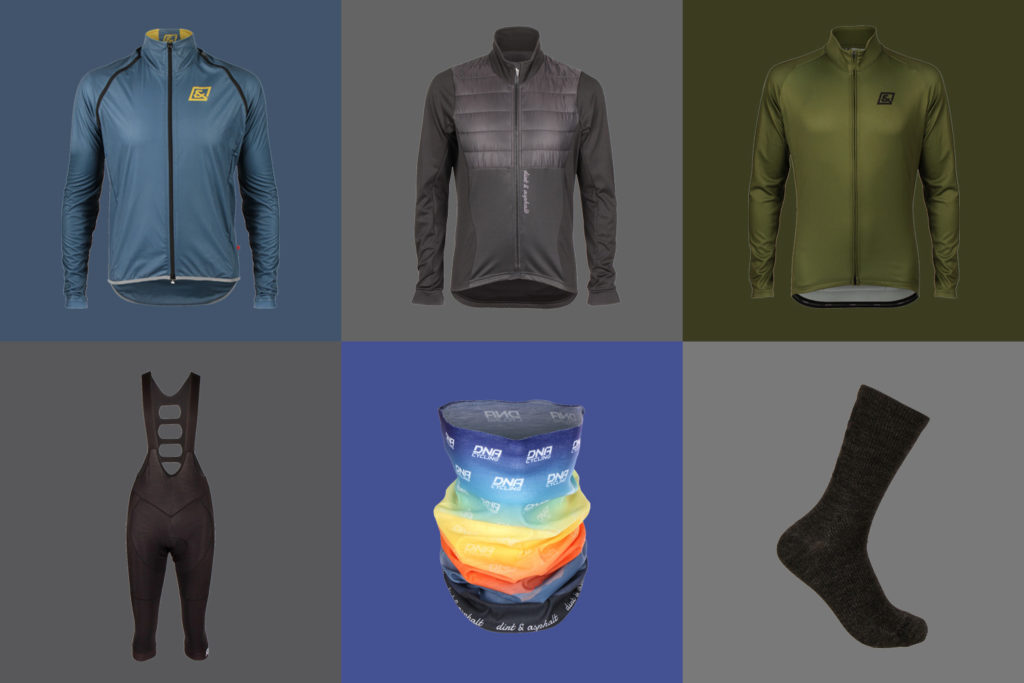TIPS & TRICKS - FAT BIKING
Written by: Seth Bradley, DNA
I started fat biking 13 years ago with the first edition SALSA MUKLUK fat bike. It had a 2×9 Shimano DEORE gruppo and weighed as much as a Volkswagen. I love skiing in the winter but when the snow is not good for skiing it is usually great for fat biking. I really struggle to get on a trainer and after the holidays I need something to work off the cookies. Trails that I ride all summer long transform with the addition of snow. I actually have some STRAVA times that are faster on a fat bike than a regular bike because technical features get smoothed out. Here are a few tips that may help you with your fat biking or answer questions if you are thinking about getting into it.
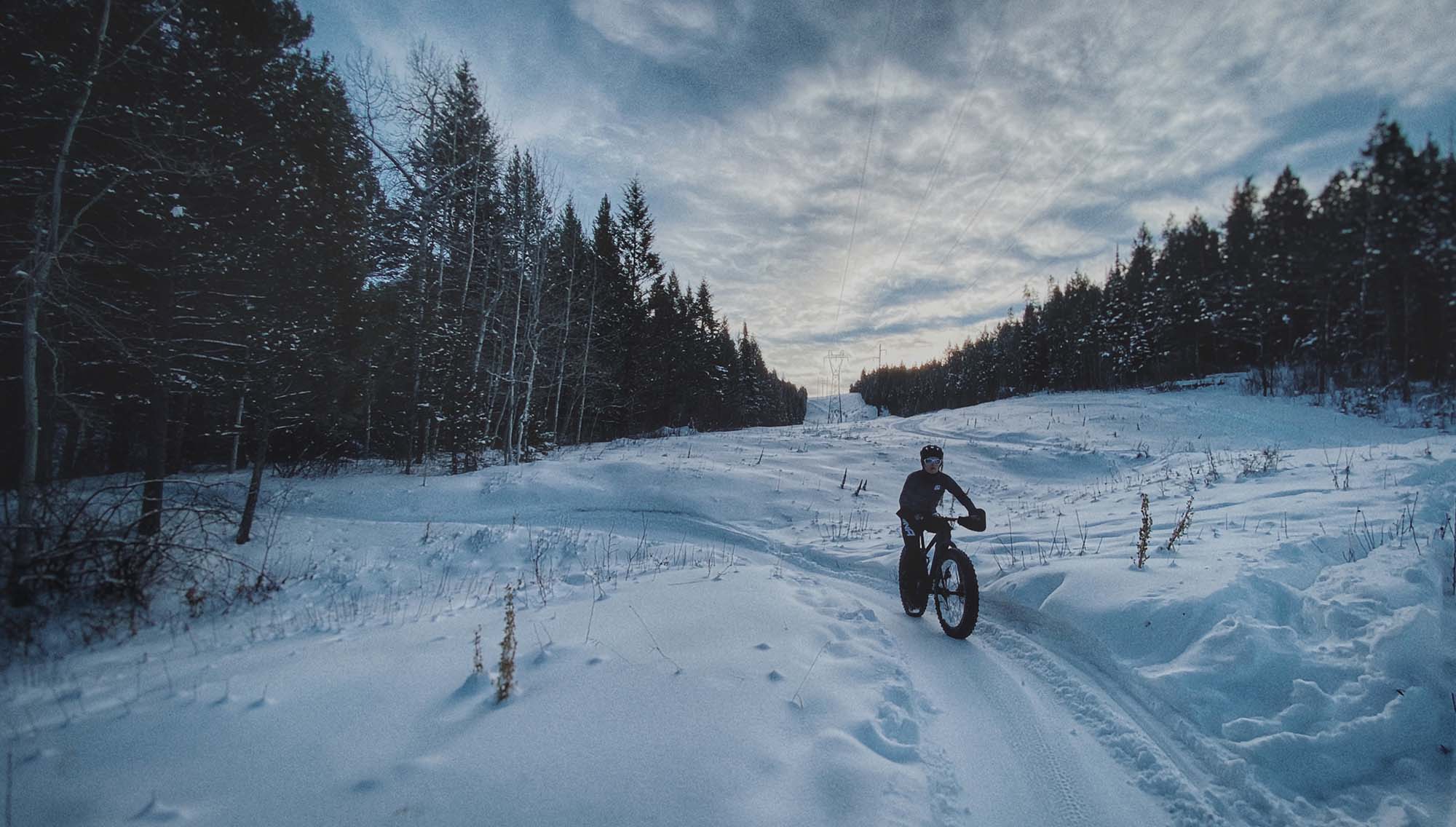
SETTING UP YOUR BIKE
Bike setup is personal to everyone. However, over the years, here are a few components I have found the most useful on my fat bike.
FRONT SHOCK
I run a BLUTO Front Shock fork. The front shock on a fat bike is rarely used, but occasionally, when you are riding a trail that has been postholed by hikers or wildlife, it is nice to have, but not a necessity. I recommend a fork with 100mm-120mm of travel.
DROPPER POST
A dropper post on a fat bike is almost a requirement if you do any technical fat biking. If you are sticking to groomed, low angle trails in an area like round valley, it is not needed. If you are doing any steep or single track, it makes things so much easier and safer. With single track fat biking, you have 12-18 inches of a packed trail, but if you get off that trail, it becomes soft and unridable. If you are descending and you get off the trail, your front tire sinks and you are over the bars. If you are climbing it means putting your foot off the trail and sometimes sinking up to your knee. Having a dropper is very helpful to get rolling again or for preventing you from going OTB. I currently run a PNW dropper post on my bike for its cost-effectiveness and reliability.
WHEELSETS
Snow is constantly changing in temp, texture, and hardness even throughout the day. Because of this, I’ve found having multiple wheelsets for my fat bike helpful. I currently have three sets which are:
1. 26” Alex 80 Rims with 45NRTH Flobeist 4.6” front tire and a Jumbo Jim 4.0” on the rear. My go to wheelset when things are loose, deep, or soft. They give me better traction for climbing and more control on the descent.
2. 650b MULE FÜT 65 SL MAXXIS MINION FBF / FBR 3.8″ tires. This wheelset is great when I need something a little lighter on a groomed road or trail.
3. 29” Velocity dually wheel with MAXXIS chronicle 3.0” tires mostly used for bike packing or the occasional snow ride when it is VERY firm.
PEDALS
My preferred pedal for fat biking is the Crank Brothers Candy Pedals. I choose to run these pedals because their design sheds snow better than others on the market, making it much easier to clip in and out of on the trail when you have snow or ice in your cleat or pedal. Many people run flats because it is easier and you can get your foot on and off fast but I like a clipless to keep my foot in place for the descents.
BAR MITTS
The quickest way to ruin a fat bike ride is to have cold hands. That’s why I always ride with bar mitts, neoprene hand covers that keep your hands warm on long cold rides. I still start my rides with the DNA winter gloves, but many times end up taking my gloves off. I don’t like riding with a giant winter glove because I can’t feel the bar, shifters, or brake levers as well. The bar mitts make it so I can wear a much lighter glove and have a better hand feel on my bike.
FRAME PUMP
I keep a little frame pump on my bike to be able to adjust my tire pressure on the go. Many times I will ride from my house to the trail head. When doing this, I air up at home and then let air out of the tires when I hit the snow. I am not crazy detailed about tire pressures but having too much or too little air can make things much harder than they need to be on a fat bike. I start my rides around 5 psi and move up or down a few based on the current conditions.
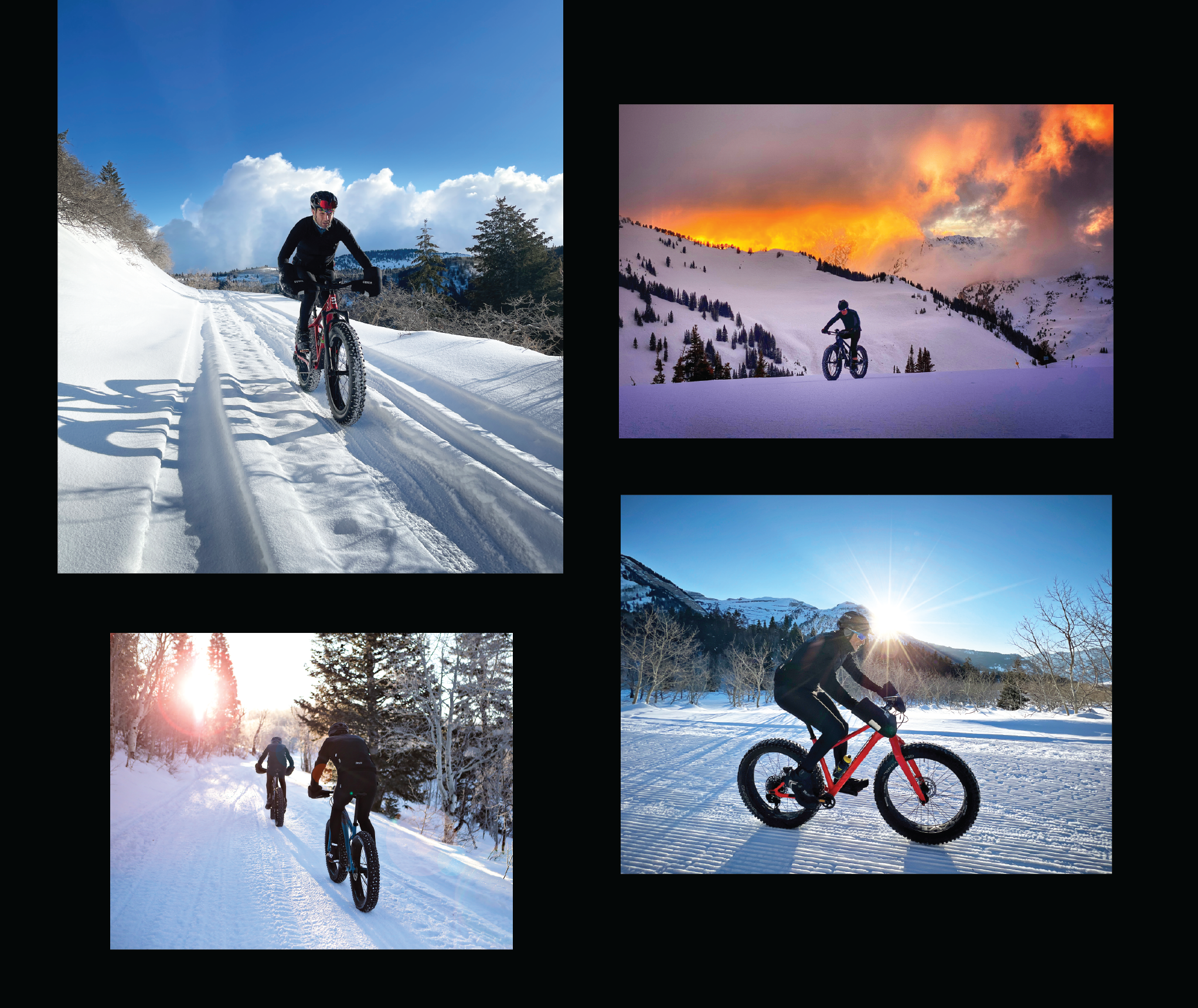
WHAT TO WEAR
The two most common questions in fat biking are “What tire pressure are you running?” and “How many layers do you have?” Many people worry about being too cold during a fat bike ride when, in fact the bigger issue is being too hot. Here are our tips to create the perfect kit for any temperature.
OVER 30º
If it is warmer than 30ºF, I will wear a short-sleeve jersey under my jacket or no jersey. I also will go with a lightweight long or short sleeve jersey and layer DNA’s Duo jacket over it. I can zip the sleeves off if it gets warm and put them back on for cold descents. I will usually swap out the thermal bibs for the thermal knickers and go to the light weight tech MTB glove or nothing on my hands.
15º TO 30º
Generally, when I ride my fat bike, temps are between 15º and 30ºF.
I wear DNA’s thermal bib tights with a sleeveless base layer, a lightweight long-sleeve jersey, and the Friluftsliv riding jacket. I will wear a neck buff around my neck to keep me warm, or I can pull up if my ears get cold or over my nose for descents. It is easy to remove if I start warming up during the climbs. I wear out winter riding gloves and merino socks. I wear a few different cold-weather riding shoes/ boots depending on whether I am trying to go fast or stay warm.
15º AND COLDER
If temps are colder than 15ºF, I generally swap out the lightweight long-sleeve jersey for a thermal jersey or a merino wool long sleeve jersey. And I bring an extra neck buff for ears or anything above the neck that may get cold. Sometimes on the descent, you can get freeze brain if your forehead is not covered.
This set up will keep me warm to around -5ºF. I don’t ride if it is colder than that.
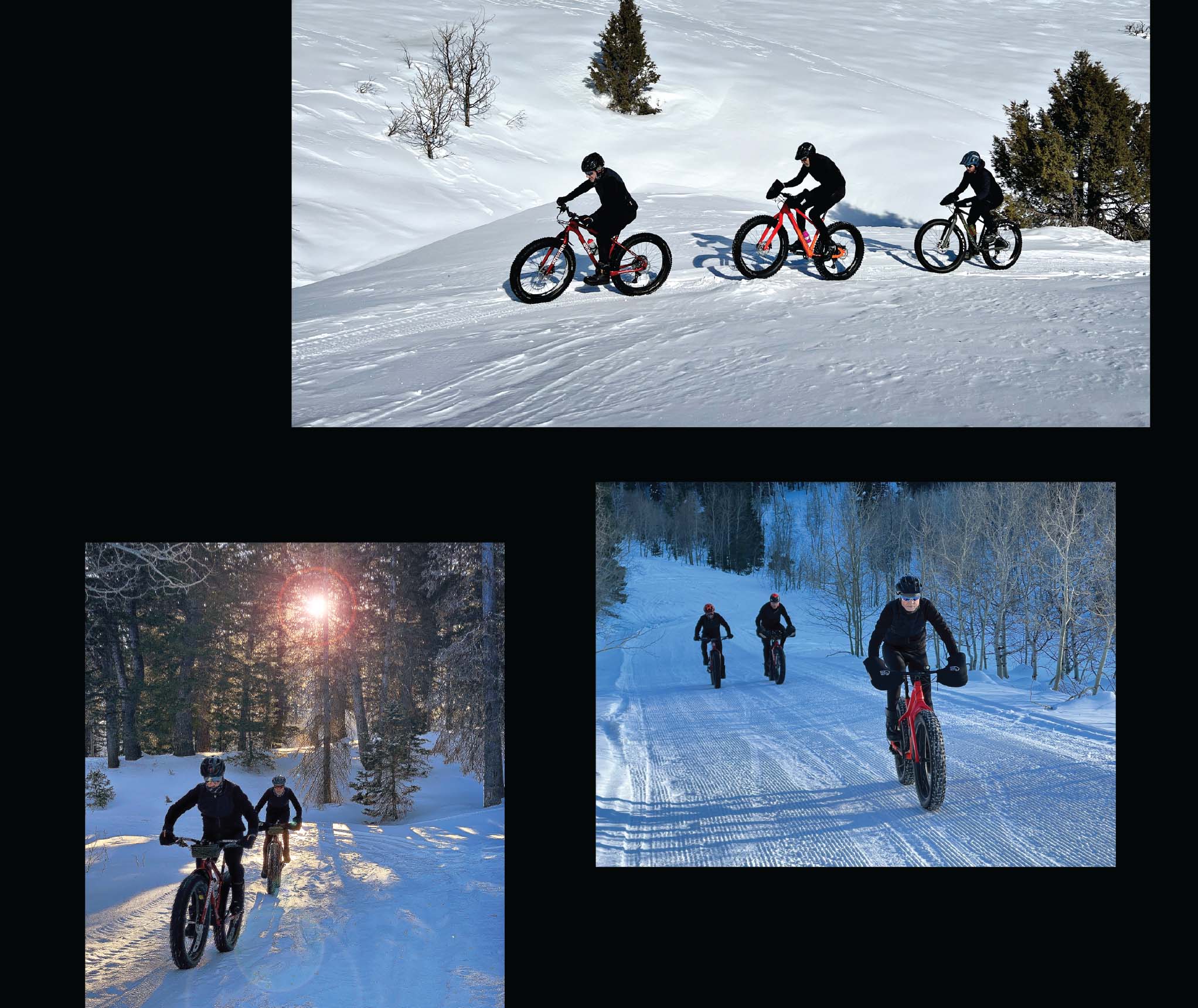
WHAT THE STAFF IS RIDING
There’s certainly not a lack of fat bikes on the market right now. For those looking for a new fat bike the Canyon Dude CF 7 and the Borealis Creston have quickly become some of our favorites. Check out our build specs below:
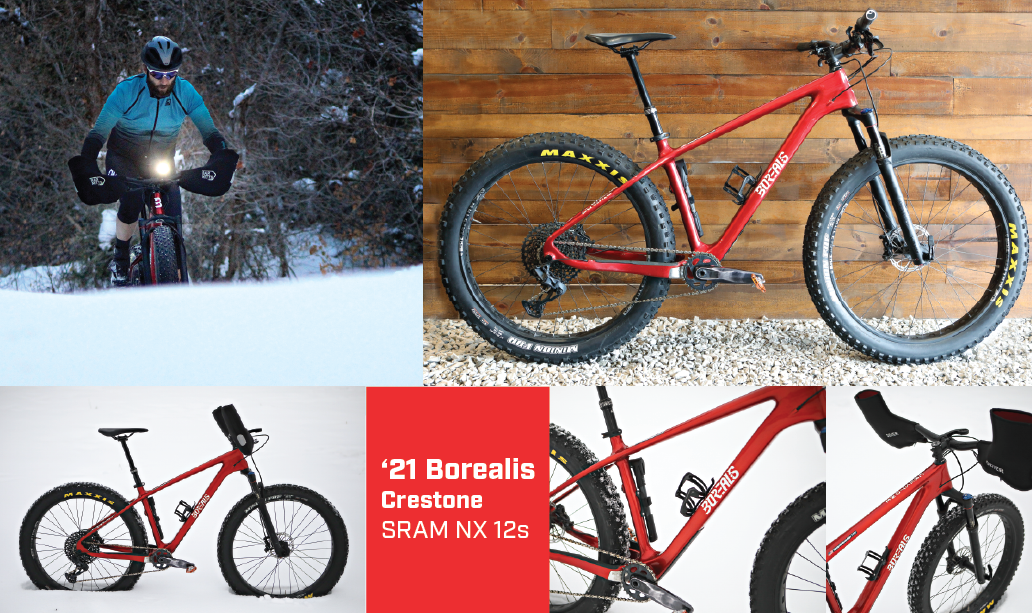
Material: Carbon
Groupo: SRAM 12 Speed NX Group
Dropper: PNW Dropper
Pedals: Crank Brothers Candy
Wheelset: 650b MULE FÜT 65 SL MAXXIS MINION FBF / FBR 3.8″ tires.
Tires: MAXXIS MINION 3.8″
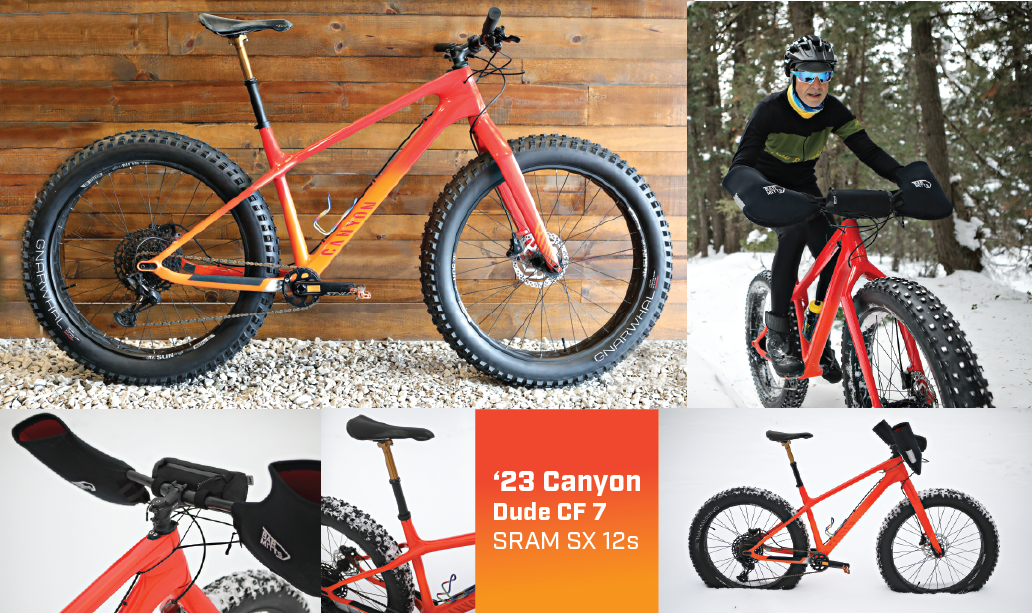
Material: Carbon
Groupo: SRAM SX Eagle 30T / 11-50 12 Speed
Dropper: Fox Transfer SL
Pedals: Crank Brothers Egg Beater
Wheelset: Sun Ringle Mulefut 80 SL 27.5
Tires: Gnarwhal 4.5″
WHY I RIDE
What I love about fat biking is getting out with friends and enjoying the outdoors while watching each other stumble and fall our way down the trail. It’s great for mixing up those long hours spent on the trainer all alone. For those looking to try out fat biking I recommend reaching out to a local shop to see what kind of rentals they have before committing to a new bike purchase. Check out DNA Cycling’s Outerwear Collection to make sure you stay warm out there. See you on the trails.
-Seth
TIPS AND TRICKS - FAT BIKING
Written By: Seth Bradley, DNA
I started fat biking 13 years ago with the first edition SALSA MUKLUK fat bike. It had a 2×9 Shimano DEORE gruppo and weighed as much as a Volkswagen. I love skiing in the winter but when the snow is not good for skiing it is usually great for fat biking. I really struggle to get on a trainer and after the holidays I need something to work off the cookies. Trails that I ride all summer long transform with the addition of snow. I actually have some STRAVA times that are faster on a fat bike than a regular bike because technical features get smoothed out. Here are a few tips that may help you with your fat biking or answer questions if you are thinking about getting into it.
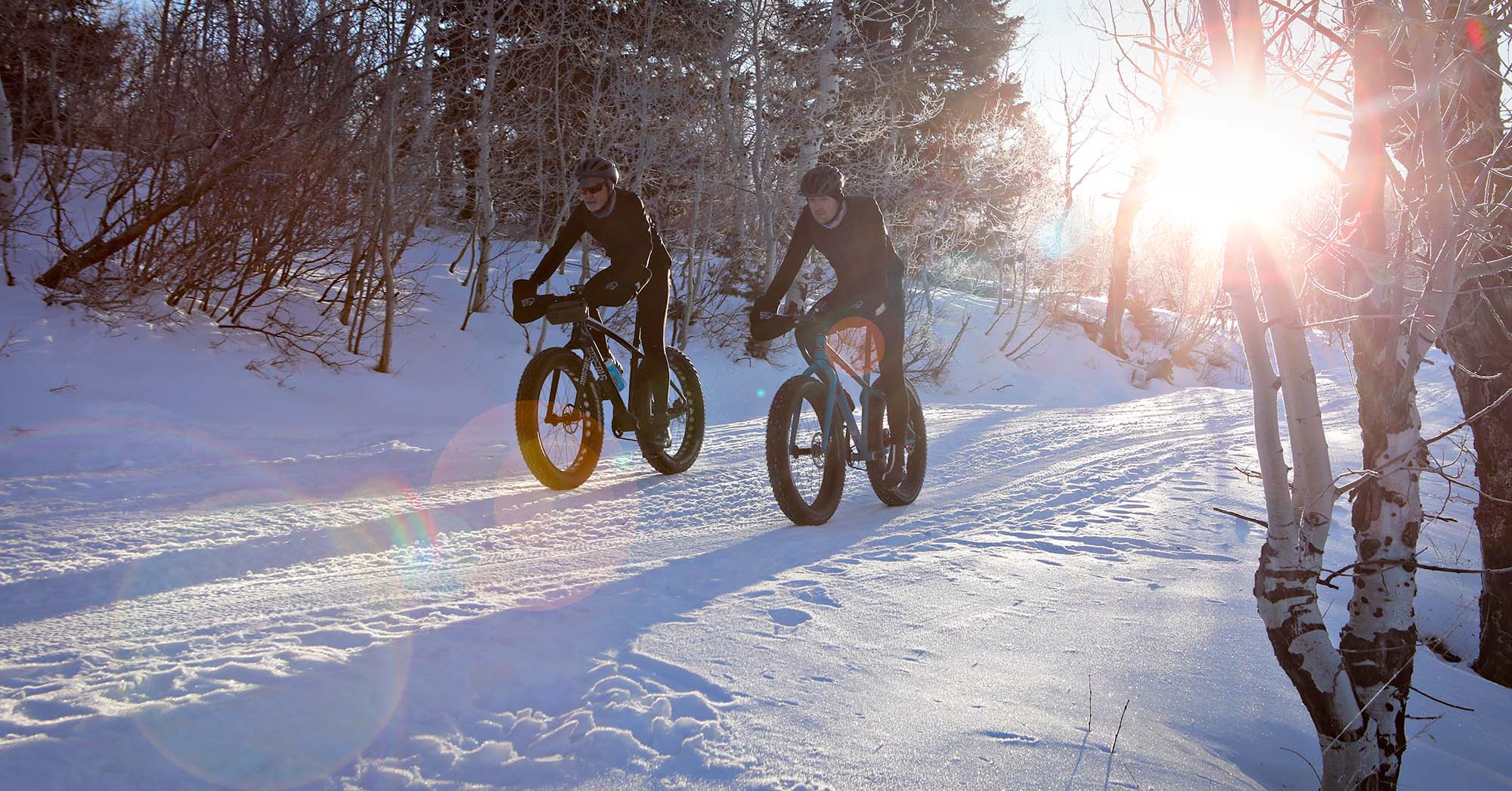
SETTING UP YOUR BIKE
Bike setup is personal to everyone. However, over the years, here are a few components I have found the most useful on my fat bike.
FRONT SHOCK
I run a BLUTO Front Shock fork. The front shock on a fat bike is rarely used, but occasionally, when you are riding a trail that has been postholed by hikers or wildlife, it is nice to have, but not a necessity. I recommend a fork with 100mm-120mm of travel.
DROPPER POST
A dropper post on a fat bike is almost a requirement if you do any technical fat biking. If you are sticking to groomed, low angle trails in an area like round valley, it is not needed. If you are doing any steep or single track, it makes thing so much easier and safer. With single track fat biking, you have 12-18 inches of a packed trail, but if you get off that trail, it becomes soft and unridable. If you are descending and you get off the trail, your front tire sinks and you are over the bars. If you are climbing it means putting your foot off the trail and sometimes sinking up to your knee. Having a dropper is very helpful to get rolling again or for preventing you from going OTB. I currently run a PNW dropper post on my bike for its cost-effectiveness and reliability.
WHEELSETS
Snow is constantly changing in temp, texture, and hardness even throughout the day. Because of this, I’ve found having multiple wheelsets for my fat bike helpful. I currently have three sets which are:
1. 26” Alex 80 Rims with 45NRTH Flobeist 4.6” front tire and a Jumbo Jim 4.0” on the rear. My go to wheelset when things are loose, deep, or soft. They give me better traction for climbing and more control on the descent.
2. 650b MULE FÜT 65 SL MAXXIS MINION FBF / FBR 3.8″ tires. This wheelset is great when I need something a little lighter on a groomed road or trail.
3. 29” Velocity dually wheel with MAXXIS chronicle 3.0” tires mostly used for bike packing or the occasional snow ride when it is VERY firm.
PEDALS
My preferred pedal for fat biking is the Crank Brothers Candy Pedals. I choose to run these pedals because their design sheds snow better than others on the market, making it much easier to clip in and out of on the trail when you have snow or ice in your cleat or pedal. Many people run flats because it is easier and you can get your foot on and off fast but I like a clipless to keep my foot in place for the descents.
BAR MITTS
The quickest way to ruin a fat bike ride is to have cold hands. That’s why I always ride with bar mitts, neoprene hand covers that keep your hands warm on long cold rides. I Still start my rides with the DNA winter gloves, but many times end up taking my gloves off. I don’t like riding with a giant winter glove because I can’t feel the bar, shifters, or brake levers as well. The bar mitts make it so I can wear a much lighter glove and have a better hand feel on my bike.
FRAME PUMP
I keep a little frame pump on my bike to be able to adjust my tire pressure on the go. Many times I will ride from my house to the trail head. When doing this, I air up at home and then let air out of the tires when I hit the snow. I am not crazy detailed about tire pressures but having too much or too little air can make things much harder than they need to be on a fat bike. I start my rides around 5 psi and move up or down a few based on the current conditions.
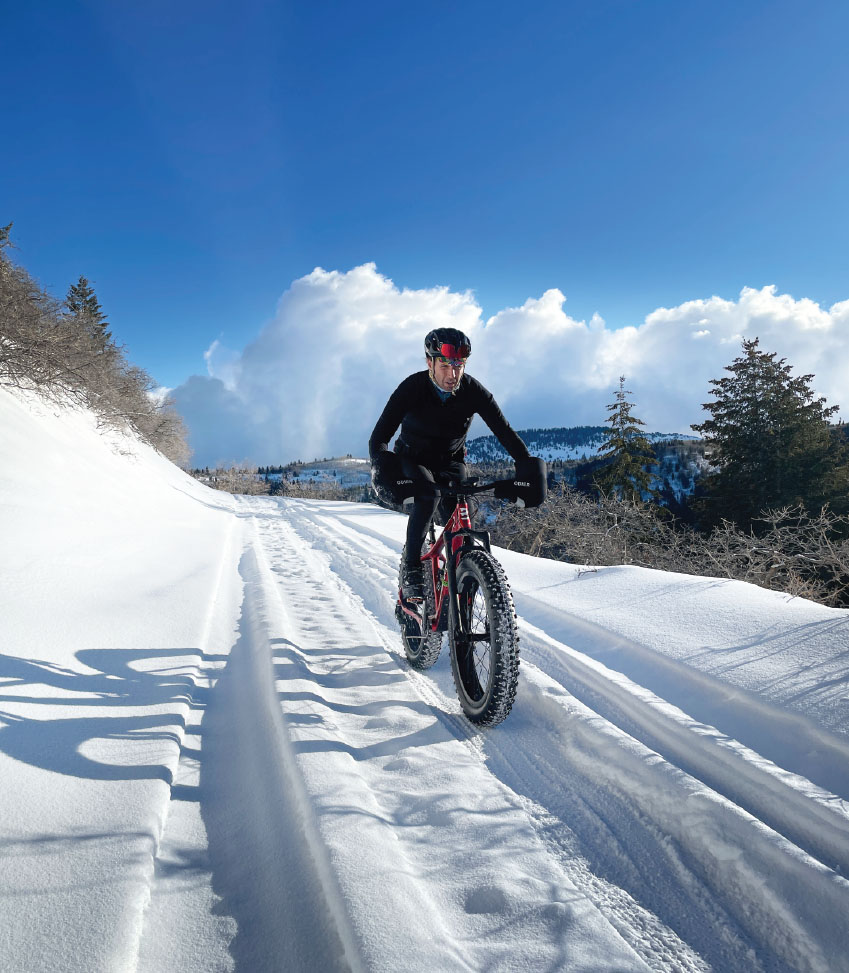
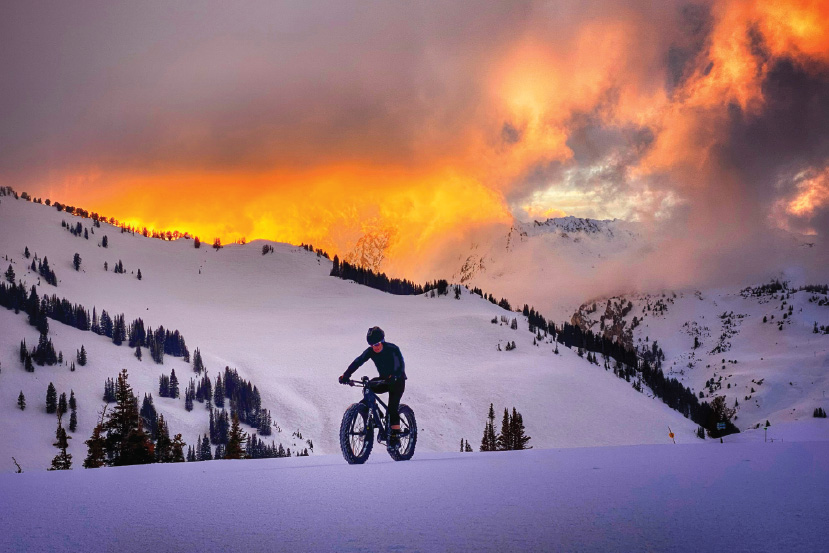
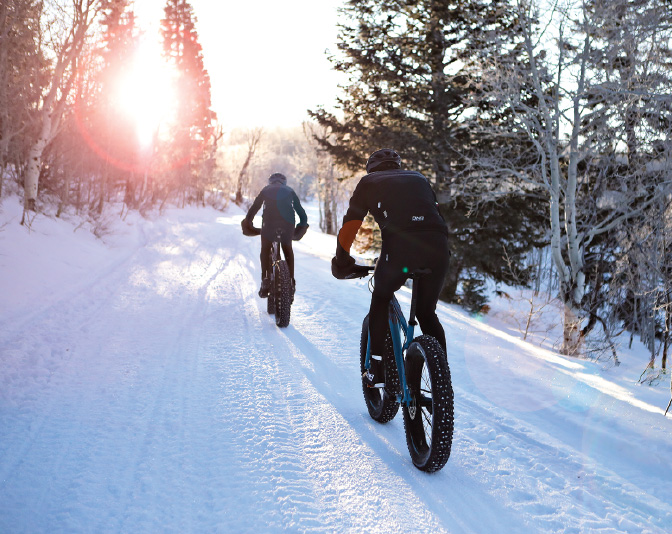
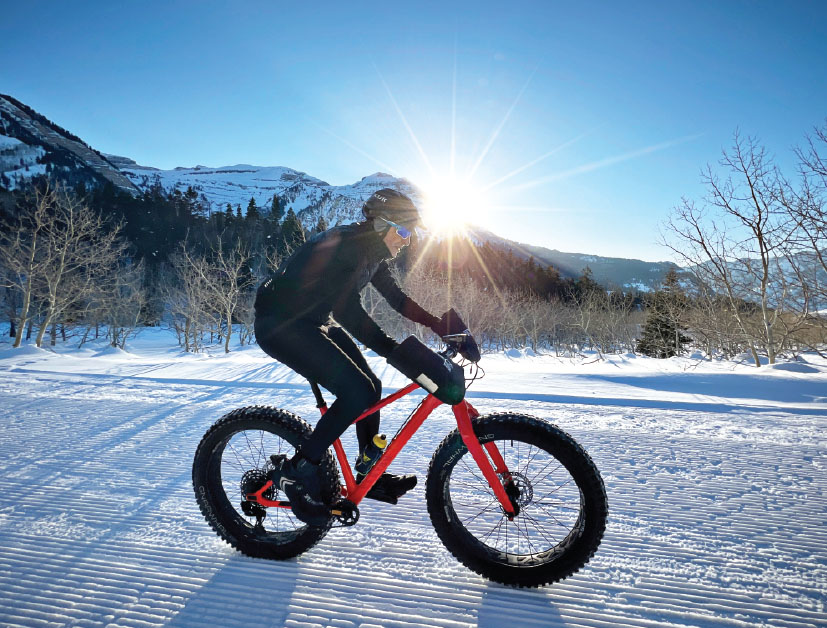
WHAT TO WEAR
The two most common questions in fat biking are “What tire pressure are you running?” and “How many layers do you have?” Many people worry about being too cold during a fat bike ride when, in fact the bigger issue is being too hot. Here are our tips to create the perfect kit for any temperature.
OVER 30º
If it is warmer than 30ºF, I will wear a short-sleeve jersey under my jacket or no jersey. I also will go with a lightweight long or short sleeve jersey and layer DNA’s Duo jacket over it. I can zip the sleeves off if it gets warm and put them back on for cold descents. I will usually swap out the thermal bibs for the thermal knickers and go to the light weight tech MTB glove or nothing on my hands.
15º TO 30º
Generally, when I ride my fat bike, temps are between 15º and 30ºF.
I wear DNA’s thermal bib tights with a sleeveless base layer, a lightweight long-sleeve jersey, and the Friluftsliv riding jacket. I will wear a neck buff around my neck to keep me warm, or I can pull up if my ears get cold or over my nose for descents. It is easy to remove if I start warming up during the climbs. I wear out winter riding gloves and merino socks. I wear a few different cold-weather riding shoes/ boots depending on whether I am trying to go fast or stay warm.
15º AND COLDER
If temps are colder than 15ºF, I generally swap out the lightweight long-sleeve jersey for a thermal jersey or a merino wool long sleeve jersey. And I bring an extra neck buff for ears or anything above the neck that may get cold. Sometimes on the descent, you can get freeze brain if your forehead is not covered.
This set up will keep me warm to around -5ºF. I don’t ride if it is colder than that.
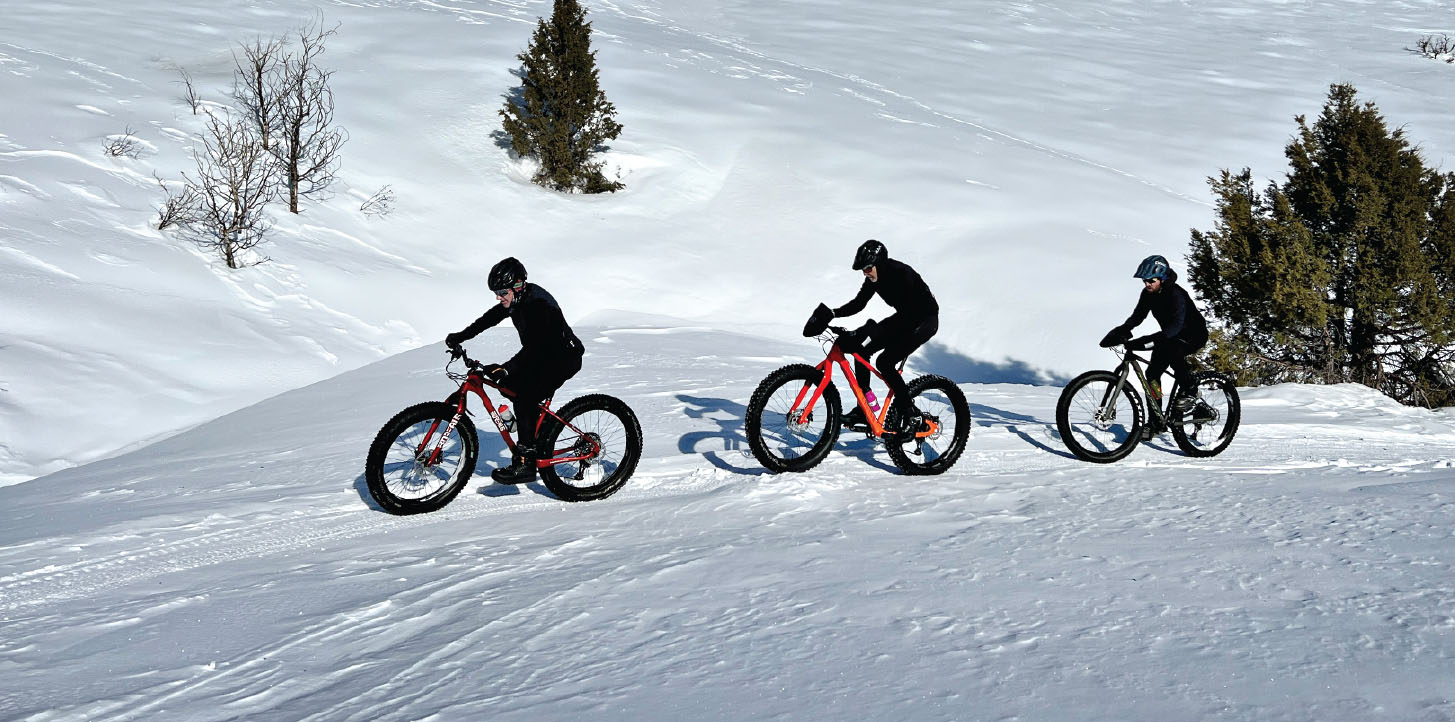
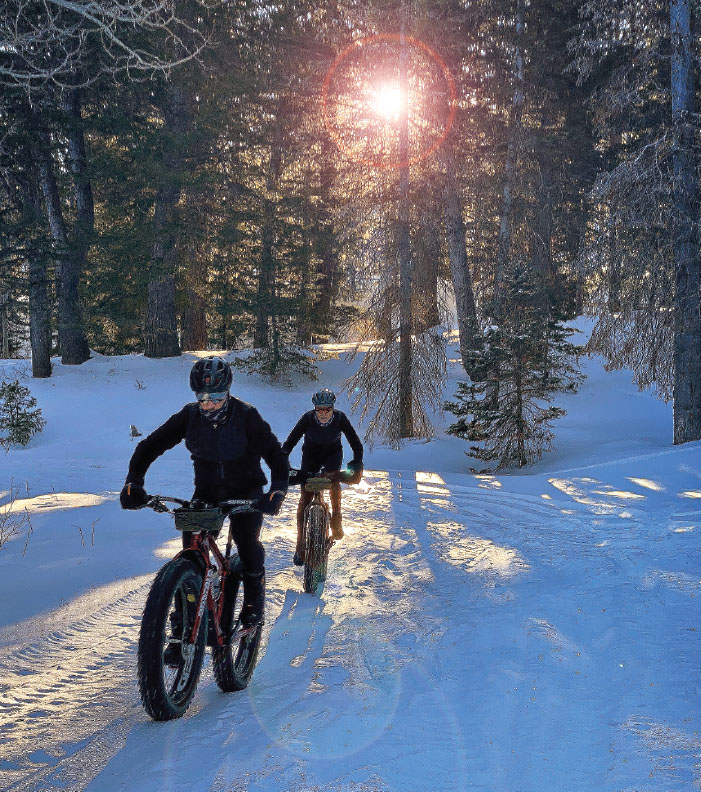
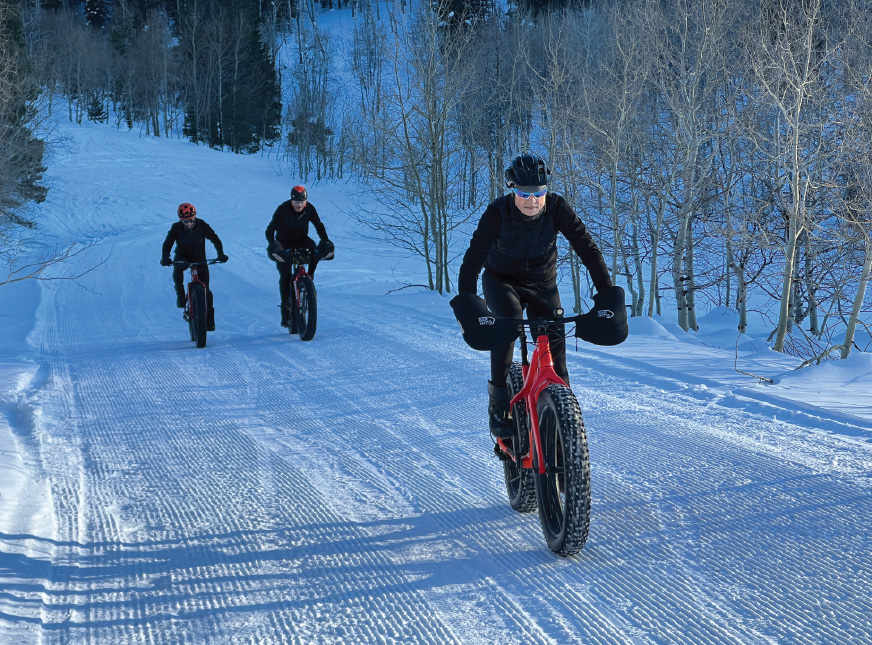
WHAT THE STAFF IS RIDING
There’s certainly not a lack of fat bikes on the market right now. For those looking for a new fat bike the Canyon Dude CF 7 and the Borealis Creston have quickly become some of our favorites. Check out our build specs below:

Material: Carbon
Groupo: SRAM 12 Speed NX Group
Dropper: PNW Dropper
Pedals: Crank Brothers Candy
Wheelset: 650b MULE FÜT 65 SL MAXXIS MINION FBF / FBR 3.8″ tires.
Tires: MAXXIS MINION 3.8″

Material: Carbon
Groupo: SRAM SX Eagle 30T / 11-50 12 Speed
Dropper: Fox Transfer SL
Pedals: Crank Brothers Egg Beater
Wheelset: Sun Ringle Mulefut 80 SL 27.5
Tires: Gnarwhal 4.5″
WHY I RIDE?
What I love about fat biking is getting out with friends and enjoying the outdoors while watching each other stumble and fall our way down the trail. It’s great for mixing up those long hours spent on the trainer all alone. For those looking to try out fat biking I recommend reaching out to a local shop to see what kind of rentals they have before committing to a new bike purchase. Check out DNA Cycling’s Outerwear Collection to make sure you stay warm out there. See you on the trails.
-Seth


